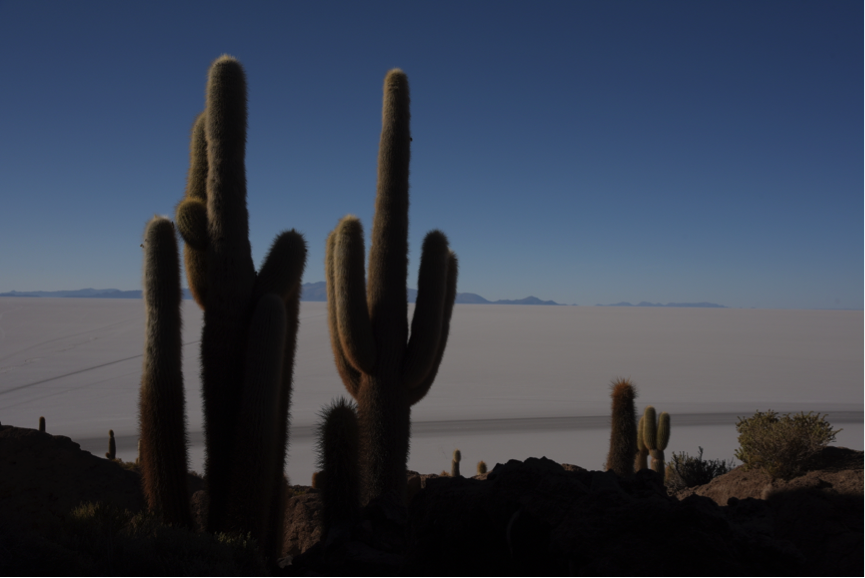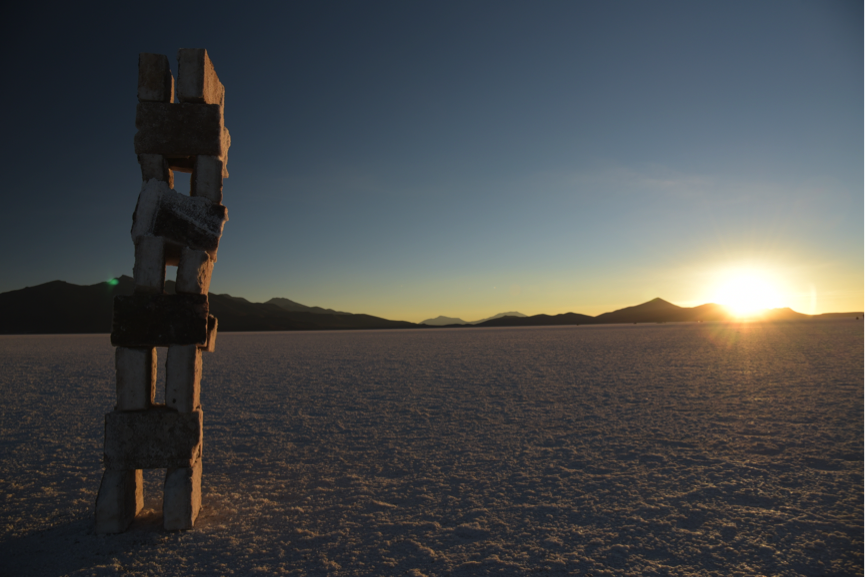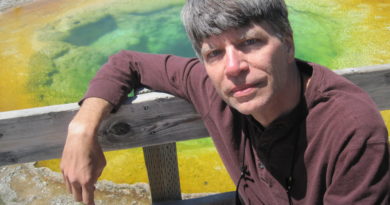A day in the Salt Desert
Imagine yourself walking on salt in a 10 528 km2 desert. Imagine looking at the horizon and only see the edge of our planet, lightened white and blue. You take a deep breath and think: does this really exist? Am I dreaming?
Good news! It’s real. Located in Bolivia, the Salar de Uyuni is the world’s largest salt flat.
The journey starts in Uyuni, a small and dusty town where we get to know Reynaldo and 2 other couples who will travel with us the upcoming days, as well as the V8 LandCruiser which will be responsible for transporting us throughout the Andes. We leave in the morning and after one hour of driving, we are presented with the first attraction: a cemetery of trains that were abandoned.
After another hour or so, we finally arrive at the Salar. The first impression is not that easy to describe but as you set foot on it and raise your eyes to realize its dimension. It’s an extraordinary feeling, a unique and astonishing experience of seeing this bright landscape.
No hills spotted. All flat. Don’t forget your sunglasses, otherwise you will be blinded by such a strong white light. We ask ourselves how this is possible, a desert made of salt?
Don’t forget its altitude, this plateau is located at 3,656 meters above sea level. At these heights and with no water drainage, it is believed that rainwater fell down from the mountains and concentrated into a giant lake, forty thousand years ago. This giant lake dried up and split into several smaller lakes, leaving behind minerals and glistening white salt that got so thin and solidified to become a salt desert. In some areas of the Salar, the layer of salt can reach 10 meters of depth.
In fact, Uyuni is an Aymara (native language) term that means enclosure and native people share a legend about it. “Once upon a time Kusku and Tunupa were married and Kusku betrayed his wife by choosing another woman, Kusina. The three were believed to be giants who became mountains and this enormous lake was formed by Tunupa’s tears.“
The Salar itself, as most of the deserts, has minor to no vegetation and wildlife. It is however rich in lithium, containing 50% to 70% of world’s known lithium reserves: Lithium is especially used to treat mental diseases and also for aircraft manufacture and batteries. Most surprising is to discover in the middle of nowhere a cactus island, named Incahuasi (Inkawasi).

This island is named after Quechua, the Inca’s empire language which is still the third most spoken language in South America. In fact, the name of the island consists of a combination of two Quechua words which mean Incas (Inca) and Home (wasi). Today it’s the home of giant cactuses (Echinopsis atacamensis), that can grow up to 10 meters high. Standing aside these plants is quite a remarkable experience as you feel sort of small when you look at them.
At the end of the journey, we cannot miss the last sunrays of the day. The combination of red and pink shades of the sunset in the Salar of Uyuni is so clear and intense that you could stay here forever.

If you are planning to visit the Salar you should do it before it’s too late. With the exploration of potassium chloride and lithium granted by Evo Morales last year, this desert will surely disappear soon.
Good to know:
The best time to visit is between June and October before the wet season starts and the desert gets flooded.



